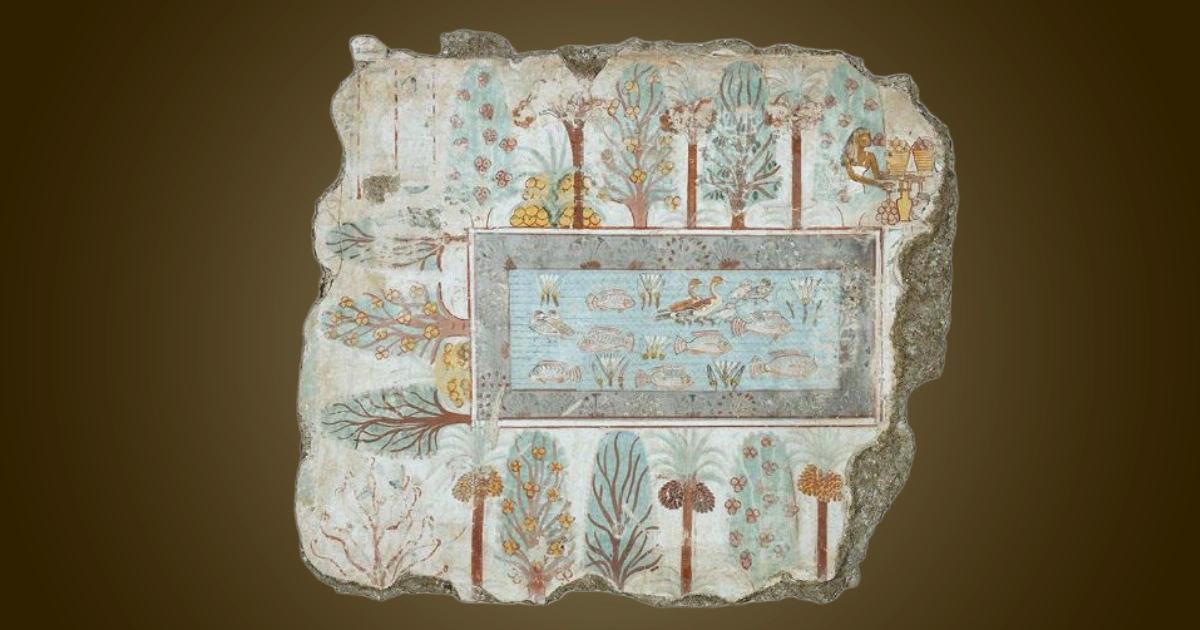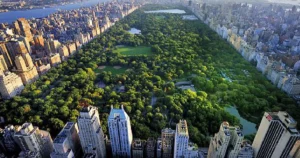Landscape is a fundamental mode of human expression and experience. [1] For a man, everything around him is an experience. Experience changes with the change in a situation, a path or a thought. Talking about the spatial experience, when there is a certain expression of nature or art it creates a transition. The expression of nature and art is highly influenced by the culture. The path that connects the expression and the human is the context or cultural background. Landscape binds nature and culture together. The context is important while creating a space with many experiences. The transitional space rich in giving an experience, a sense of mental peace, pleasure and the cultural expression, perhaps could have led to the formation of the concept of the garden.
The relaxing rhythm of walking, the free-play of the imagination and the direct perception of nature in the forest bring about significant changes in awareness and the way things are experienced.[2] The forest having natural settings could have been the first inspiration of mankind for the evolution of gardens.
Was the experiential character or pleasure the only reason to establish gardens? The garden as a concept perhaps could have started with the agricultural movement. During the ancient times, in Egyptian civilization, when man established the settlement near the banks of river Nile, he started growing crops, vegetables to fulfil the basic survival needs and agriculture started. Over the period of time, he started developing small lands beneath his marked territories. He started developing front yards for a functional purpose. In the settlement, every resident started having their own gardens with flowers, ponds, groves, shade trees, which were irrigated through rivers of the Nile. The garden of Egypt, well explained through the paintings on the wall of tombs in Thebes, has grapevines in the middle of the front yard and also the ponds with animals and flowers. The whole idea of constructing a nature or the place-making [3] evolved, eventually, by adding elements to the setting. As when the scale increased the palaces and tombs also started having huge landscaped yards as gardens.
The effort to make or construct the new world in the particular area that is having a unique character is the garden. The hanging garden of Babylon has a variety of exotic species. Although the existence of the hanging garden is unknown, the painting portrays the character, landscape elements, the drama and the sense of scale. Using different species together at one place explains that man in those times was capable of creating a different experience through a landscape. Growing such huge trees on the terraces and playing with the levels, at that period of time, is definitely an expression of creating a new world.
Gardens on the other hand can also be a man-made effort to create an ecosystem. Was the garden concept evolved through natural settings of creating nature or an ecosystem within a particular area? The Eden Garden, a thought painted by an ancient man, had everything including animals, fruit trees and lakes within it. The perception of a garden was given by an ancient man through painting. Was it an effort to engage the viewer with a thought that the gardens could also be an ecosystem?
The gardens evolved with various purposes through various thoughts, through various influences. Gardens are of many kinds, but they are an effort of a constructed nature. They may have boundaries to restrict the function, a purpose or an experience that is within that space, or they may have edges to cut off the transition happening inside with the outside life. With all the above examples about the emergence of gardens my opinion is that the garden is the man-made effort, emerged through roots of nature, art and culture. The influence of many things, settings and context formed the garden.
References:
- First principles or Rudiments- pg8 pa5.
- Between landscape architecture and land art- Weilacher,Udo.
- First principles or Rudiments- author provisionally defines landscape architecture as place making.
- https://en.wikipedia.org/wiki/Gardens_of_ancient_Egypt ( Image1)
- https://www.liverpoolmuseums.org.uk/stories/gardens-ancient-egypt ( Image 2)


